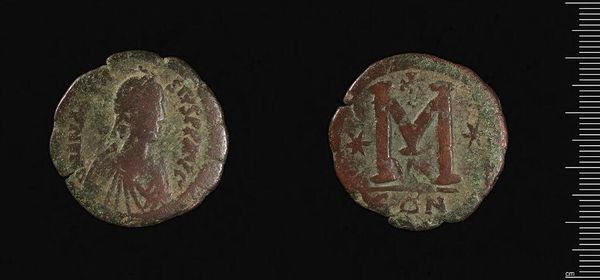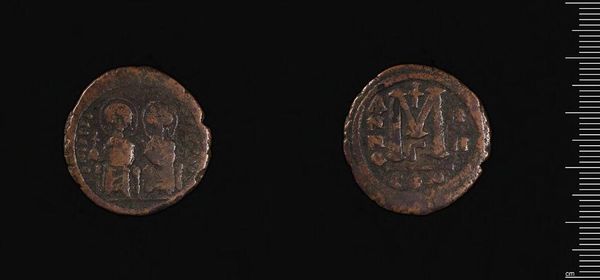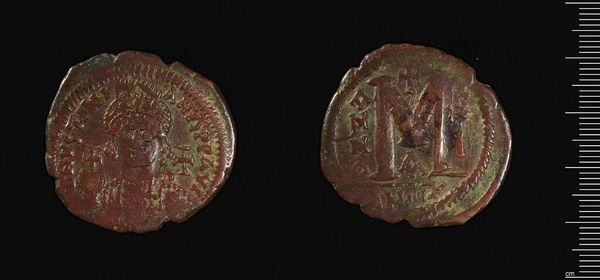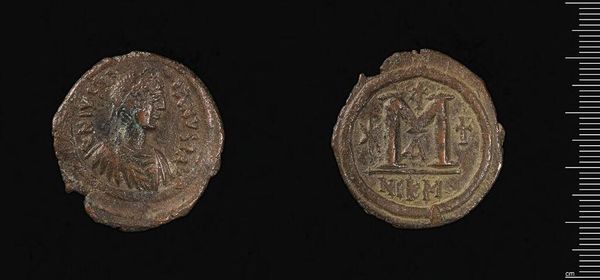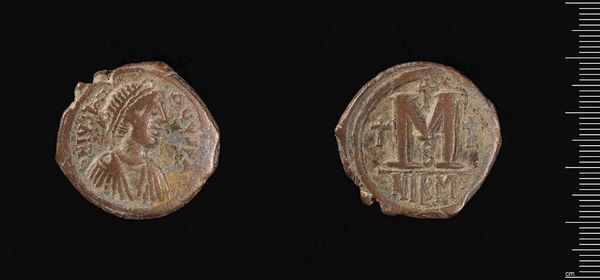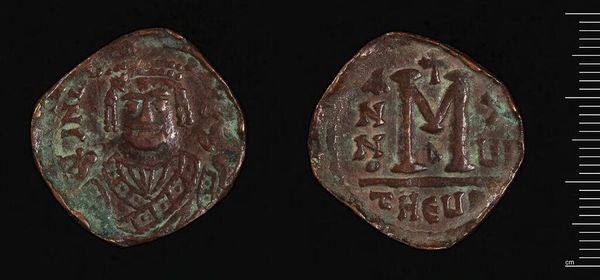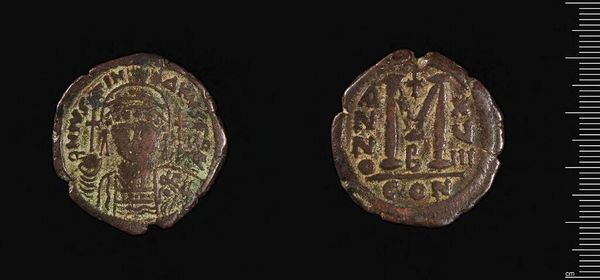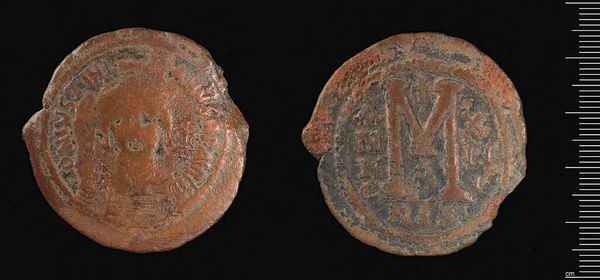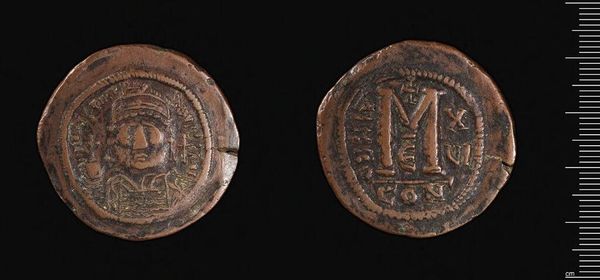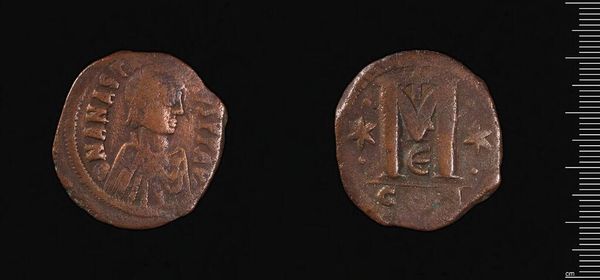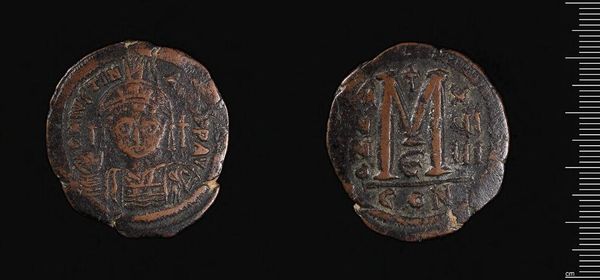
Coin of Maurice Tiberius c. 582 - 583
Dimensions: 11.32 g
Copyright: CC0 1.0
This coin, made of bronze, was issued during the reign of Maurice Tiberius, who ruled the Byzantine Empire from 582 to 602 AD. Bronze, a common alloy of copper and tin, was perfect for producing coinage during this period. The process of striking coins involved skilled metalworkers who engraved dies with the emperor's image on one side and an imperial symbol on the other. Looking closely, you can see how the material's inherent qualities—its color, weight, and durability—influenced its function as a medium of exchange and propaganda. The coin bears witness to a complex interplay of labor, skill, and imperial power. Minting coins was a highly controlled state activity, reflecting the emperor's authority and economic control. The act of production, with its associated workshops and artisans, would have been integral to the empire's functioning. So, the next time you see a coin, remember that it’s not just money; it’s a tangible link to the social and economic structures of the past.
Comments
No comments
Be the first to comment and join the conversation on the ultimate creative platform.
